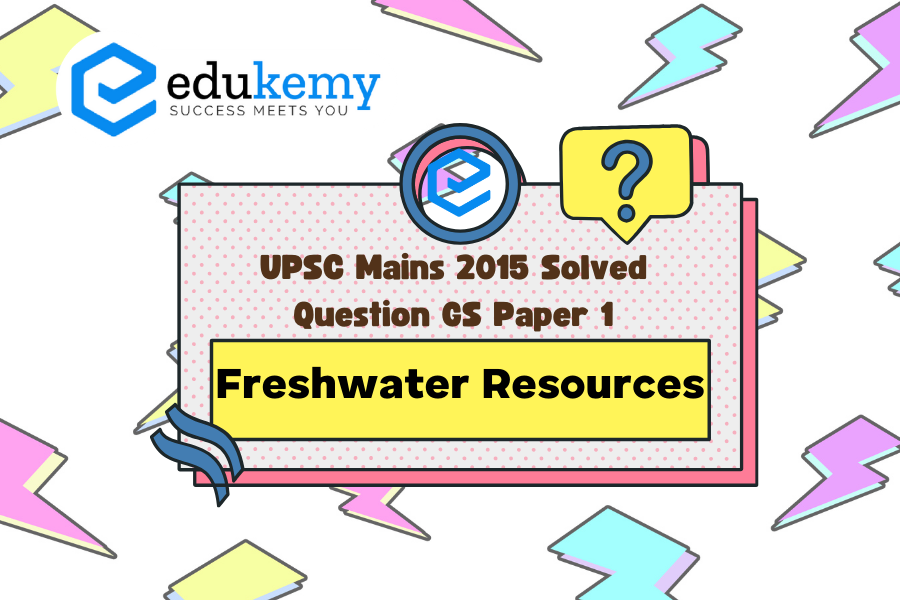
India, a country blessed with abundant freshwater resources, finds itself grappling with a persistent issue of water scarcity. Despite possessing vast rivers, lakes, and groundwater reservoirs, the nation faces a complex interplay of factors that contribute to this paradoxical situation. Rapid population growth, urbanization, and industrialization have placed an immense strain on water resources, leading to over-extraction and depletion. Inefficient water management practices and outdated irrigation systems further exacerbate the problem, resulting in substantial wastage of this precious resource. Climate change adds another layer of complexity, causing erratic rainfall patterns and extreme weather events that disrupt the traditional water cycle. Moreover, pollution of surface and groundwater sources further reduces the availability of clean water for both domestic and agricultural purposes. Inequitable distribution and access to water resources intensify the scarcity, disproportionately affecting marginalized communities. Policy challenges, institutional inefficiencies, and the lack of holistic water conservation strategies contribute to the persistence of water scarcity in India. Addressing this multifaceted issue demands a comprehensive and sustainable approach, involving better governance, modernized infrastructure, and community-driven water conservation initiatives to ensure the equitable distribution and efficient utilization of India’s abundant freshwater resources.
Tag: Distribution of key natural resources across the world.
Contents
Decoding the Question:
- In the Introduction, begin your answer by defining water scarcity and include some data on freshwater resources and water scarcity.
- In Body,
- Explain why India is facing water scarcity despite having enough freshwater resources.
- State some initiatives taken by the Government.
- Conclude your answer with some positive way out and SDG goals.
Answer:
India is not an inherently water-short country. Its average total annual rainfall which is higher than the world average of 990 mm should normally suffice to meet the country’s critical needs. India has enough fresh water to meet its needs but the problem is the unequal distribution and sporadic nature of monsoon. According to Falkenmark, a Swedish expert, water stress occurs when water availability is between 1,000 and 1,600 cubic meters per person per year. India ranks 133 in the world in terms of water availability per person per annum. By 2025, it is predicted that large parts of India will join countries or regions having absolute water scarcity.

The causes of water scarcity can be discussed as:
- Regional disparity among various regions. Some parts of India have arid and semi-arid conditions.
- A significant number of non-perennial (seasonal) rivers which depend upon monsoon.
- Monsoon climatic conditions result in abundant rainfall in a short period of around three months and a lean period the rest of the time.
- Spatial variance in the amount of precipitation received. Numerous local factors play a role in bringing downpours which results in some receiving abundant rainfall and the other being water-scarce.
- The high population of India has led to an increased need for water. Moreover with increasing purchasing power demands/needs have risen.
- Low awareness and implementation of water reuse and recycling. Increased costs and less priority has led to fewer water recycling/treatment plants.
- Increased pollution of water resources due to industrial effluents, excessive use of fertilizers, pesticides, etc. has decreased the net amount of fresh water available for usage. Perennial rivers such as Ganga have been heavily polluted. Such misuse and abuse of water bodies has resulted in polluted and contaminated lakes, ponds and wetlands.
- Over-exploitation of groundwater coupled with inadequate aquifer recharge and lack of awareness about water harvesting programs.
- Unsustainable water utilization such as excessive irrigation. Government policies such as free electricity and minimum support price (MSP) for water-intensive crops have nudged the farmers into choosing unsustainable irrigation techniques.
Efforts of Government and private sector:
- Over the past years, the government has worked on groundwater recharging projects, micro-irrigation, and legislative changes to promote better water management.
- As many as 256 of 700 districts have reported ‘critical’ or ‘over-exploited’ groundwater levels, according to the latest data from the Central Ground Water Board (2017).
- Now the government is working on piped potable water to every rural household by 2024. In the past year, the Jal Jeevan Mission has served 20 million families with clean water.
- New water purification technologies like smart water purifiers and auto-maintenance systems are paving the way to a better future.
- The introduction of IoT technology, sensors, and data-driven approaches in water purification by Indian start-ups is showing the ray of hope to solve this problem.
As Confucius once said, “The man who moves a mountain begins by carrying away small stones”. Some small steps can create a way out. Our journey is to achieve goal six of the United Nations-mandated Sustainable Development Goals could just become easier if we remain engaged, influential, and productive to ensure the availability and sustainable management of water and sanitation for all by 2030.
In case you still have your doubts, contact us on 9811333901.
For UPSC Prelims Resources, Click here
For Daily Updates and Study Material:
Join our Telegram Channel – Edukemy for IAS
- 1. Learn through Videos – here
- 2. Be Exam Ready by Practicing Daily MCQs – here
- 3. Daily Newsletter – Get all your Current Affairs Covered – here
- 4. Mains Answer Writing Practice – here

